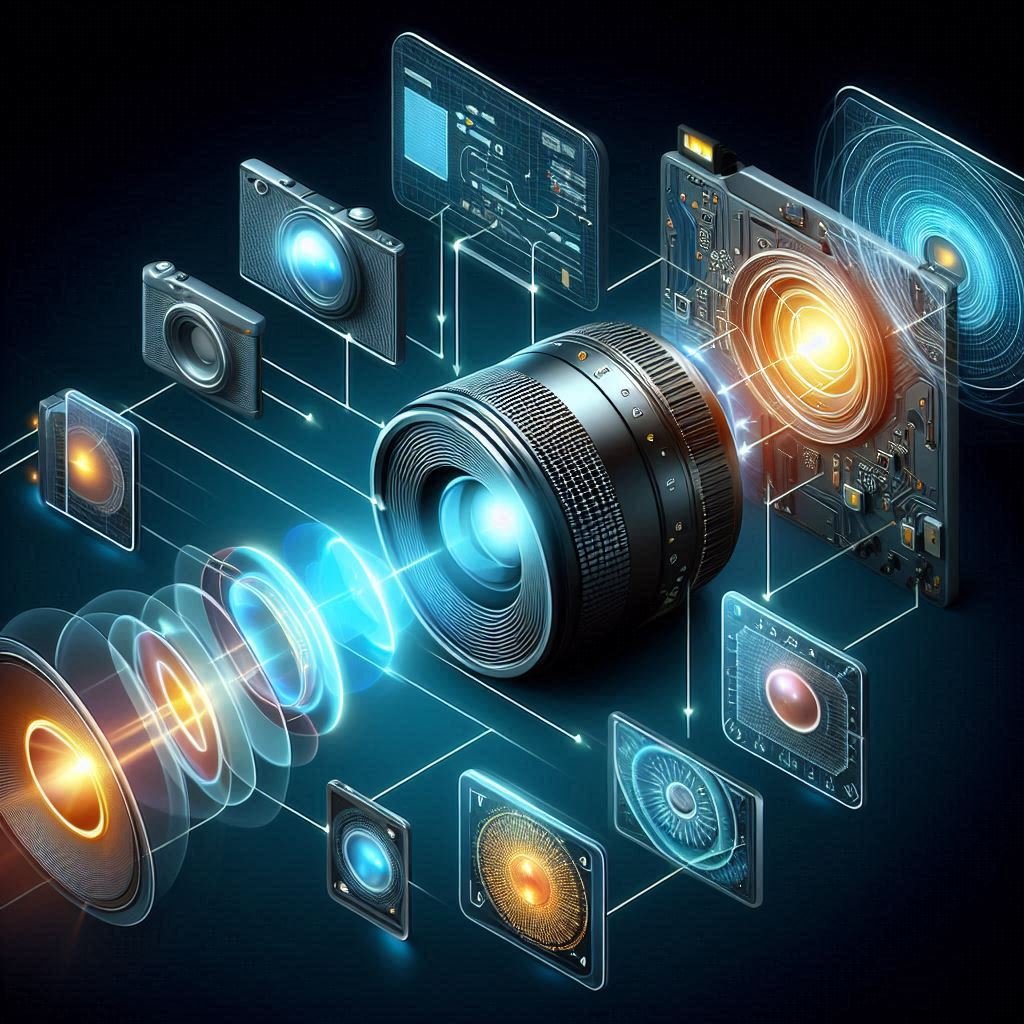Introduction
Digital cameras have revolutionized the world of photography, making it easier than ever to capture and share high-quality images. But have you ever wondered how digital cameras work? Understanding the mechanics behind these devices can enhance your appreciation for the technology and improve your photography skills. Let’s dive into the fascinating world of digital cameras and explore their inner workings.
Basic Components of a Digital Camera
Lens
The lens is the eye of the camera, focusing light onto the image sensor. Different lenses have varying focal lengths and apertures, influencing the quality and style of the captured image.
Image Sensor
The image sensor, either a CCD (Charge-Coupled Device) or CMOS (Complementary Metal-Oxide-Semiconductor), captures light and converts it into an electrical signal. The size and quality of the sensor play a crucial role in image resolution and clarity.
Processor
The image processor, often referred to as the camera’s “brain,” processes the data from the image sensor, applies various adjustments, and converts it into a digital image file.
Memory Card
The memory card stores the captured images and videos. Common types include SD (Secure Digital), CF (CompactFlash), and microSD cards.
Viewfinder/LCD Screen
The viewfinder and LCD screen allow you to frame and preview your shots. Some cameras have optical viewfinders, while others rely solely on electronic displays.
Battery
Digital cameras are powered by rechargeable batteries, typically lithium-ion, providing the necessary energy for operation.
How a Digital Camera Captures an Image
Light Entry Through the Lens
When you press the shutter button, light enters the camera through the lens. The lens focuses the light onto the image sensor.
Focusing Mechanism
The camera’s autofocus system adjusts the lens elements to ensure the subject is in sharp focus. Some cameras also offer manual focus options for greater control.
Image Sensor Activation
The image sensor captures the light and converts it into an electrical signal. Each pixel on the sensor measures the intensity of light, creating a grayscale image.
Analog-to-Digital Conversion
The electrical signals from the sensor are converted into digital data by the analog-to-digital converter (ADC). This data represents the image in binary form.
Image Processing
The image processor takes the digital data, applies various adjustments such as white balance, contrast, and noise reduction, and converts it into a final image file.
Storage on Memory Card
The processed image is saved onto the memory card in a chosen format, such as JPEG or RAW, ready for viewing, editing, and sharing.
Types of Digital Cameras
Point-and-Shoot Cameras
Compact and user-friendly, point-and-shoot cameras are ideal for casual photography. They offer automatic settings and a fixed lens, making them easy to use.
DSLR Cameras
Digital Single-Lens Reflex (DSLR) cameras use a mirror mechanism to provide an optical viewfinder. They offer interchangeable lenses, manual controls, and superior image quality, making them popular among professionals.
Mirrorless Cameras
Mirrorless cameras eliminate the mirror mechanism, resulting in a lighter and more compact design. They also offer interchangeable lenses and high-quality images, appealing to both enthusiasts and professionals.
Bridge Cameras
Bridge cameras bridge the gap between point-and-shoot and DSLR cameras. They feature a fixed lens with extensive zoom capabilities and manual controls.
Role of Image Sensors
CCD vs. CMOS Sensors
CCD sensors were traditionally used in older digital cameras, known for their high image quality but higher power consumption. CMOS sensors are more common today, offering faster processing speeds and better energy efficiency.
How Sensors Capture Light
Sensors capture light through millions of tiny pixels. Each pixel measures the light intensity and converts it into an electrical signal, which is then processed into an image.
Importance of Sensor Size
Larger sensors can capture more light, resulting in better image quality, especially in low-light conditions. Full-frame sensors are larger than APS-C or micro four-thirds sensors and generally offer superior performance.
Lens and Optics
Types of Lenses
Lenses vary in focal length, aperture, and purpose. Common types include prime lenses, zoom lenses, macro lenses, and wide-angle lenses.
Aperture and Shutter Speed
Aperture controls the amount of light entering the camera, while shutter speed determines how long the sensor is exposed to light. Together, they influence the exposure and depth of field.
Optical Zoom vs. Digital Zoom
Optical zoom uses the lens to magnify the image without losing quality, while digital zoom crops and enlarges the image digitally, often resulting in a loss of quality.
Image Processing and Storage
Role of the Image Processor
The image processor handles tasks like noise reduction, color correction, and image sharpening, ensuring the final image looks its best.
File Formats (JPEG, RAW)
JPEG files are compressed and processed in-camera, suitable for immediate use. RAW files retain all the data captured by the sensor, offering greater flexibility for post-processing but requiring more storage space.
Storage Solutions
Memory cards come in various capacities and speeds. Higher capacity cards allow for more images and videos to be stored, while faster cards improve performance during continuous shooting and video recording.
Autofocus and Exposure Control
How Autofocus Works
Autofocus systems use contrast detection or phase detection to ensure the subject is in sharp focus. Some cameras offer hybrid autofocus, combining both methods for improved accuracy.
Metering Modes
Metering modes determine how the camera measures light for exposure settings. Common modes include evaluative/matrix, center-weighted, and spot metering.
Automatic vs. Manual Exposure
Automatic exposure settings adjust aperture, shutter speed, and ISO based on the scene. Manual exposure allows photographers to control these settings for creative effect.
Additional Features and Functions
Video Recording
Most digital cameras offer video recording capabilities, with some providing 4K resolution and advanced features like slow-motion capture.
Image Stabilization
Image stabilization reduces blur caused by camera shake, improving image sharpness, especially in low-light conditions or when using telephoto lenses.
Wi-Fi and Connectivity
Many cameras include Wi-Fi, Bluetooth, or NFC for easy transfer of images to smartphones, tablets, or computers, and for remote control via mobile apps.
Maintaining Your Digital Camera
Cleaning the Lens and Sensor
Regularly clean the lens and sensor to remove dust and smudges. Use appropriate cleaning tools like microfiber cloths and air blowers.
Firmware Updates
Keep your camera’s firmware up to date to benefit from the latest features and improvements. Check the manufacturer’s website for updates.
Proper Storage and Handling
Store your camera in a dry, cool place. Use a protective case to prevent damage from bumps and drops. Avoid exposing the camera to extreme temperatures and moisture.
Conclusion
Digital cameras are marvels of modern technology, combining optics, electronics, and computing to capture stunning images. By understanding how these components work together, you can make the most of your camera and enhance your photography skills. Whether you’re a casual photographer or a seasoned pro, there’s always more to learn and explore in the world of digital photography.
FAQs
What is the difference between optical and digital zoom?
Optical zoom uses the camera’s lens to magnify the subject without losing quality, while digital zoom crops and enlarges the image digitally, often resulting in a loss of quality.
How does a digital camera differ from a film camera?
Digital cameras capture images electronically and store them as digital files, whereas film cameras capture images on photographic film, which must be developed and printed.
What should I consider when buying a digital camera?
Consider factors like image quality, sensor size, lens options, ease of use, and additional features like video recording and connectivity when choosing a digital camera.
Can I use my smartphone as a digital camera?
Yes, modern smartphones have advanced cameras capable of capturing high-quality images. However, dedicated digital cameras often offer superior image quality, manual controls, and lens options.
How do I transfer photos from my digital camera to my computer?
You can transfer photos using a USB cable, memory card reader, or wirelessly via Wi-Fi or Bluetooth, depending on your camera’s capabilities.
Read More : How Far Should a Cell Phone Be from a Baby?
Read More : How long do digital camera batteries last?
Read More : How to Create 3D Models for Printing

